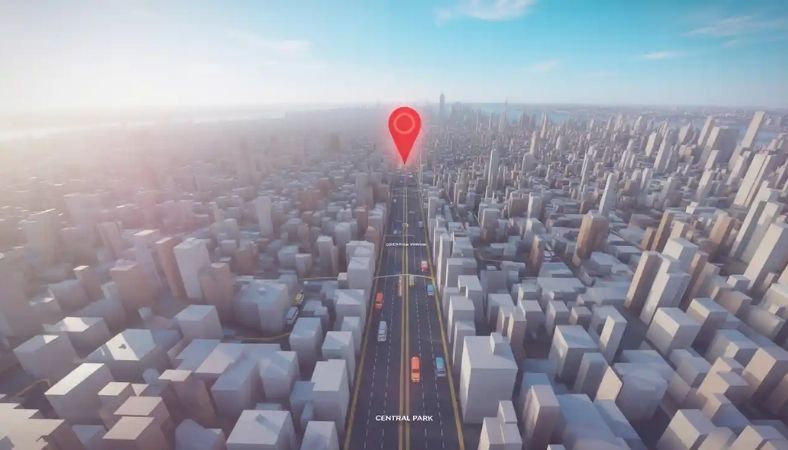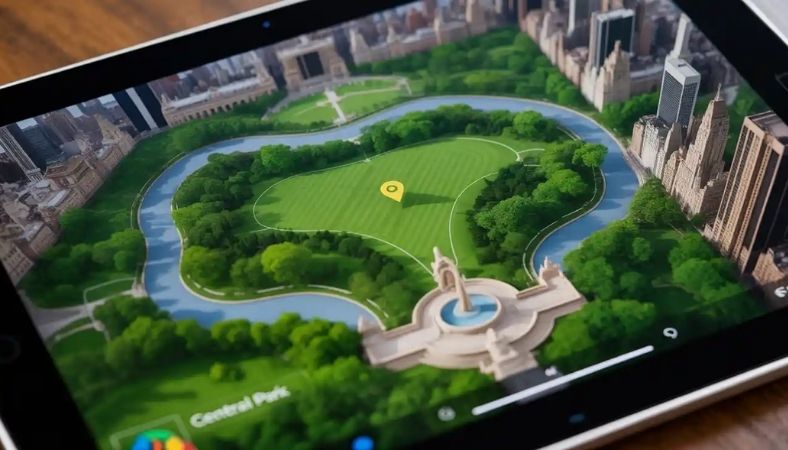Want your business to shine online? Google Maps ranking can make it happen. It drives local customers to you. This article explains how to improve your ranking. It’s packed with actionable tips. Let’s dive into the world of local SEO!

What Is Google Maps Ranking?
Understanding the Basics
Google Maps ranking determines your business’s visibility. It shows where you appear on Google Maps. Higher rankings mean more clicks. Customers find you easily when searching locally. It’s a key part of local SEO. Want to grow your business online? Free local citations can help you shine. These mentions boost your visibility.
Why It Matters
Local searches are growing fast. People use Google Maps daily. They look for nearby shops or services. A high ranking boosts your discoverability. It can increase foot traffic significantly.
How Google Decides Rankings
Google uses several factors for ranking. Proximity to the searcher is crucial. Relevance to the search query matters. Your business’s prominence also plays a role. Reviews and citations boost your ranking.
Key Components Involved
Your Google Business Profile is vital. It includes your business name, address, and phone number. Accurate details help Google trust you. Customer reviews add credibility. Photos and posts keep your profile fresh.
Connection to Local SEO
Google Maps ranking ties to local SEO. It focuses on optimizing for local searches. A strong profile improves both. Consistency across platforms builds trust. It’s a cycle that fuels success.

Step-by-Step Guide to Improve Google Maps Ranking
Step 1: Claim Your Google Business Profile
Start by claiming your profile. Visit Google My Business and sign up. Verify your business with Google. It ensures you control your listing. Add accurate details like name and address.
Step 2: Optimize Your Profile
Fill out every section completely. Include your business hours and category. Add high-quality photos of your store. Write a compelling business description. Use keywords like “Google Maps ranking” naturally.
Step 3: Gather Customer Reviews
Encourage happy customers to leave reviews. Respond to every review promptly. Positive reviews build trust with Google. They also attract new customers. Aim for consistent, authentic feedback.
Step 4: Use Local Keywords
Incorporate local keywords in your profile. Add them to your description and posts. For example, mention your city. This ties your business to local searches. It improves your Google Maps ranking.
Step 5: Post Regularly
Share updates on your profile. Post about events or promotions. Regular posts signal an active business. They keep customers engaged. Google rewards active profiles with better rankings.
Step 6: Ensure NAP Consistency
NAP stands for Name, Address, Phone. Keep them consistent across all platforms. Check your website and directories. Inconsistencies confuse Google and hurt rankings. Use tools to monitor your listings.
Step 7: Build Local Citations
Get listed on local directories. Examples include Yelp and Yellow Pages. Citations boost your prominence. They signal trust to Google. Ensure your NAP matches everywhere.
Step 8: Leverage High-Quality Photos
Upload clear, professional photos. Show your storefront, products, or team. Photos make your profile inviting. They encourage clicks from potential customers. Update them regularly for freshness.
Step 9: Use Google Posts Effectively
Create posts for special offers. Share news or customer testimonials. Posts appear in your profile. They keep your audience engaged. This indirectly boosts your Google Maps ranking.
Step 10: Monitor and Analyze Performance
Use Google My Business Insights. Track how customers find you. Monitor clicks, calls, and direction requests. Adjust your strategy based on data. Consistent analysis drives better results.
Advantages of High Google Maps Ranking
Increased Visibility
A high ranking makes you noticeable. Customers see you first on Maps. It puts you ahead of competitors. More visibility means more clicks. This drives traffic to your business.
More Foot Traffic
Local customers trust Google Maps. They visit businesses ranked higher. A top spot increases store visits. It’s especially helpful for retail. Higher foot traffic boosts sales.
Cost-Effective Marketing
Google Maps ranking is free to optimize. It requires time, not money. Compare it to paid ads. You get organic traffic without costs. It’s a budget-friendly strategy.
Builds Customer Trust
High rankings signal credibility. Customers trust top-ranked businesses. Positive reviews enhance this trust. A strong profile looks professional. It encourages customer confidence.
Targeted Local Reach
Google Maps targets local searchers. These are ready-to-buy customers. They’re searching for nearby solutions. Ranking high captures this audience. It’s perfect for small businesses.
Disadvantages of Focusing on Google Maps Ranking
Time-Intensive Process
Optimizing takes effort and time. You need consistent updates. Reviews require ongoing attention. It’s not a quick fix. Patience is key for results.
Dependence on Reviews
Your ranking relies on reviews. Negative feedback can hurt you. Encouraging reviews feels challenging. You can’t control what customers say. Managing feedback requires tact.
Algorithm Changes
Google’s algorithms evolve constantly. What works today may not tomorrow. Staying updated is crucial. It demands ongoing learning. Adaptability is a must.
Competition in Dense Areas
Urban areas have fierce competition. Many businesses vie for top spots. Standing out is tough. You need a strong strategy. Consistency beats competitors over time.
Limited Control Over Results
Google controls final rankings. You can optimize but not guarantee. External factors like proximity matter. It can feel unpredictable. Focus on what you can control.
FAQs About Google Maps Ranking
What Is Google Maps Ranking?
It’s your business’s position on Google Maps. Higher rankings mean better visibility. It’s based on relevance and prominence.
How Can I Improve My Ranking?
Optimize your Google Business Profile. Gather reviews and post regularly. Use local keywords and ensure NAP consistency.
Do Reviews Affect Google Maps Ranking?
Yes, reviews are crucial. Positive reviews boost credibility. Responding to them shows engagement. Aim for authentic feedback.
Is Google Maps Ranking Free?
Yes, optimizing is free. It requires time and effort. No paid ads are needed. It’s a cost-effective strategy.
How Long Does It Take to Rank Higher?
Results vary by effort and competition. Expect weeks to months. Consistent optimization speeds up progress. Patience is essential.
Can I Rank Without a Website?
Yes, a website isn’t mandatory. A strong Google Business Profile suffices. Add photos, posts, and reviews. It’s enough to rank well.
Conclusion
Google Maps ranking transforms your business’s visibility. It connects you with local customers. Optimizing your profile is key. Claim it, add details, and post regularly. Encourage reviews to build trust. Use local keywords strategically. Consistency across platforms boosts credibility.
The process takes time but pays off. You’ll see more foot traffic and sales. It’s a cost-effective way to grow. Monitor your progress with Google Insights. Stay adaptable to algorithm changes. High rankings build customer confidence. They set you apart from competitors. Start optimizing today for success. Your business deserves to shine locally!
Bonus Points: Advanced Tips for Google Maps Ranking
Use Geo-Tagged Photos
Add location data to your photos. It tells Google where you are. This subtly boosts your ranking. Use photo-editing tools to add geo-tags. It’s a small but effective trick.
Engage with Q&A Section
Answer questions on your profile. Customers ask about services or hours. Quick responses show you’re active. It enhances user experience. Google notices this engagement.
Leverage Local Backlinks
Get links from local websites. Think community blogs or chambers. Backlinks signal authority to Google. They improve your Google Maps ranking. Reach out to local partners.
Optimize for Mobile Searches
Most Maps searches are mobile. Ensure your profile is mobile-friendly. Check how it looks on phones. Fast-loading photos help. Mobile optimization is critical.
Track Competitor Strategies
Analyze competitors’ profiles. See their reviews and posts. Learn what works for them. Adapt their successful tactics. Stay unique but informed.

